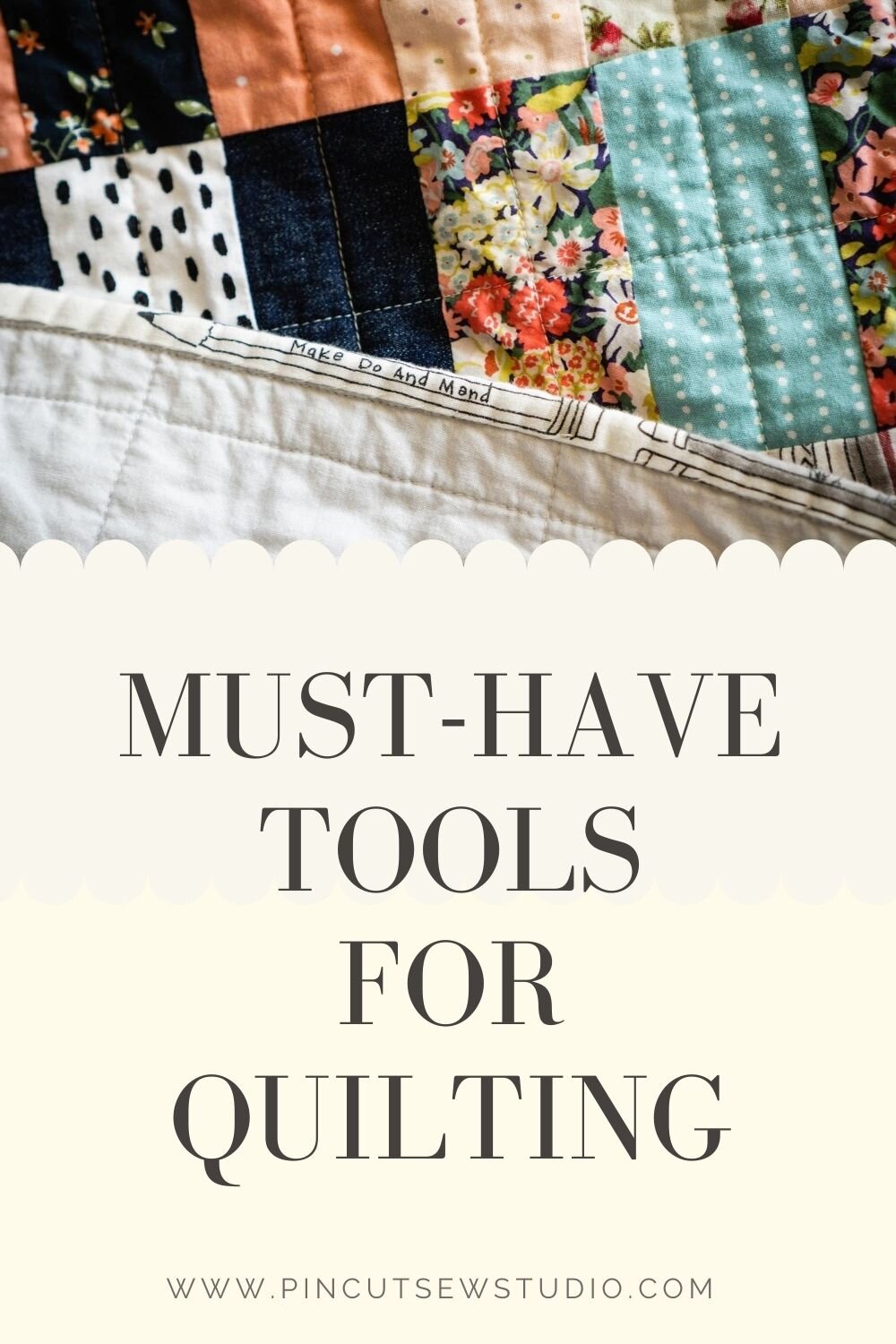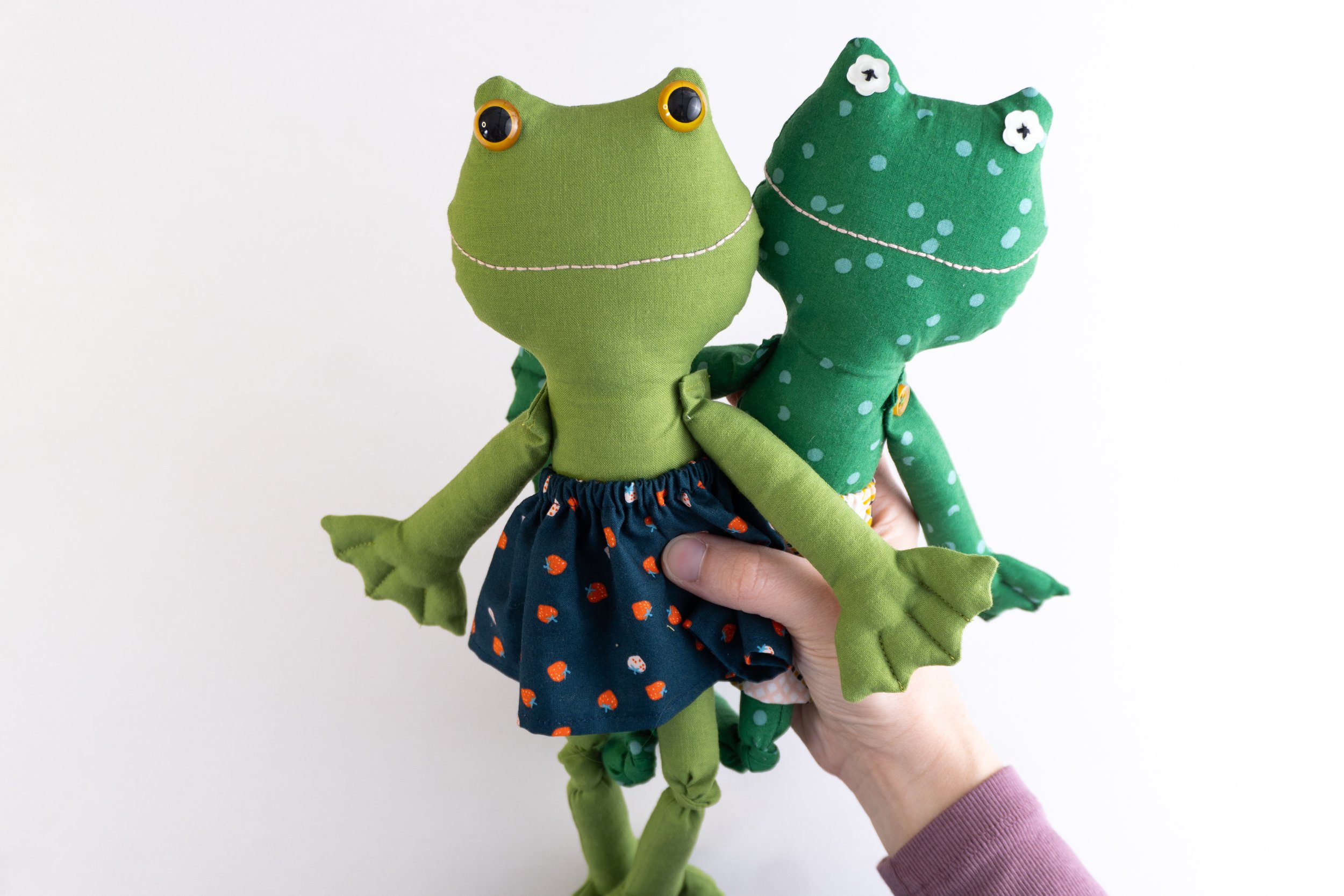Three Essential Tools for Quilting
There are lots people who want to quilt, but feel super intimidated, this I have certainly learned as I've chatted with new sewists at my classes these past few months. But I say, if you can sew a straight line, you can make a quilt! It's easy and it's actually a great way to learn to sew because it's pretty straightforward (obviously it can be very intricate and complicated too, but a beginner wouldn't choose those kinds of patterns, right?)
One big reason people hesitate to get started quilting is because they think they need a whole different set of quilting tools on top of the sewing tools they’re already starting to collect. For a beginner sewist or quilter, I can see how it might seem that way. But, there are really just a few essential tools for quilting that a beginner definitely needs. I’ve narrowed it down to just three and I’ll share those here with you today. With these simple tools, you can make a quilt from start to finish, and they’re all tools that will be useful for your regular sewing too. No one hit wonders here.
So, read on for the three essential tools a beginner quilter needs to get started! Then when you’re ready to start in on sewing a quilt, be sure and read my beginner quilt series, where I teach you how to sew a scrap quilt from start to finish!
This post may contain affiliate links, which means that while I am not paid to promote certain items, I will earn a small commission should you purchase items through these links. For more info, see my disclosure policy.
Three Essential Tools for Beginner Quilters
#1. A Rotary cutting set: mat, ruler and rotary cutter.
Ok, this may sound like three things and I guess it is, but you can buy them in a set and you definitely save money that way. I'm not sure how anyone had the patience to quilt before rotary cutters were invented. The cutting alone must have taken an absolute eternity. A rotary cutter is essential. Trust me. For my class attendees, I ordered these sets. They've arrived and I've played with them and they're great! A really good deal on Amazon too, this is the best price I've seen for all three things together.
If you’re unfamiliar with this set of tools, here’s a video I created for my beginner quilt series on how to use a rotary cutter and ruler for cutting out quilt pieces. It’s not hard, of course, but there is a bit of a learning curve for how to square up the fabric and cut perfect strips or squares, so this video will teach you those tricks.
#2. A walking foot.
This is a special attachment for your machine foot that is necessary for the final steps, the actual quilting part. Since by this point you'll have a few layers pinned together (your quilt top, batting and backing: what we call the "quilt sandwich"), this foot helps keep the top layer moving along at the same speed as the bottom layer so you don't have ugly tucks and puckers. If you’ve tried quilting before and had a lot of problems with the fabric bunching up, this tools solves that problem.
Certain machines come with a built in walking foot like mine (I use a Pfaff and they come standard with this brand) but for most machines you'll need to purchase it separately. I use basic Brother machines for my sewing students and ordered a universal walking foot for all four of them.
Mine look like this:
This foot fits many brands of low shank machines, but if yours isn’t included, just search for one for your brand or order through the manufacturer.
Here's a little video on how to use your new walking foot:
A walking foot is also very handy for sewing knit (stretchy) fabrics or to get over bulky seams or when you're sewing lots of layers. Just a good thing to have if you'll be sewing a lot.
#3. Quilting Pins
I almost write this post with only two quilting essentials, but as I thought through the process, I decided quilting pins needed a mention as a number three. These aren't your average straight pins, they're actually safety pins. Remember my mention of the "quilt sandwich?" These pins keep your quilt layers together while you quilt and you remove them as you go. I use the large size like these. Don't be tempted to just buy cheap safety pins from the office store, those aren't nickel-plaited steel like these are and you'll risk them leaving gray marks or rusting onto your quilt, eek!
You'll need more than comes in that package for large quilts; I'd have about 100 on hand to be safe. Using pins like this keeps you from poking yourself while you top stitch your quilt.
That's all! My three must-have, don't-attempt-without-them tools for beginner quilters.
Time to Start Quilting!
I’ve posted about quilting several times here on Pin, Cut, Sew, so here are some links to get you started:
Scrap Quilt Series. This links to the introductory post on how to make the scrap quilt pictured below from start to finish. Follow the links on each post to the rest of the series!
Easy DIY Color Block Quilt Tutorial. This is a quilt a made my daughter and it’s a super easy quilt to put together. Even though there’s not a lot of piecing, it will help you learn the quilt making process.
If you’d like to start with something smaller, but still learn how a quilt goes together, try these cute quilted coasters. These are one of my favorite handmade gifts to make for others because they’re so fun to personalize. You can watch the video tutorial and then purchase a printable version of it in my pattern shop.
That should get you started for now! If you make any of these projects, I’d love to see them, of course. Send me an email or tag me on Instagram. I LOVE to see what inspiration you all have gained from my blog!
Cheers and happy sewing! :)


















Sew a “plop” for your Kindle or phone with this easy tutorial (so great for gifts too).